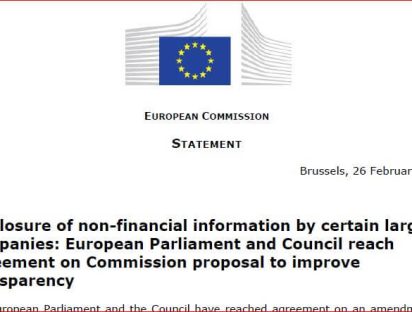
Temperance seems to be an important virtue in business life. Academic business ethics has devoted significant work to it, with references to the ancient Greek philosophers, in particular Aristotle, as well as to thinkers closer to us in time, such as Adam Smith. According to the authors of a recent article published in the Journal of Business Ethics, it could even be the most fundamental of all virtues. The aim of this article – and of the following one – is to explore the theoretical and, above all, practical significance of this assertion.
1.
Temperance, moderation and the golden mean
The words temperance and moderation are two close synonyms – so much so that their definitions sometimes seem interchangeable. In the following definition, temperance includes the idea of moderation: “marked by moderation: such as keeping or held within limits: not extreme or excessive, moderate in indulgence of appetite or desire, moderate in the use of alcoholic beverages” (1). The definition of moderation also refers to temperance, notably in this first sense: “avoiding extremes of behavior or expression: observing reasonable limits; calm, temperate” (2).
Given this overlapping of meanings, we will use the word “temperance” to designate self-control in the area of desires and the pleasures associated with them. For Aristotle, it results from the psychological disposition to keep oneself away not only from all excesses (3), but also from all deficiencies. For any moral virtue aims at the mean – in the sense of the golden mean – between a specific deficiency and a specific excess (4). As Pierre Aubenque describes it:
“The definition of virtue contains […] a reference to an objectifiable norm: each virtue is a mean between two vices, one of which is an excess, the other a deficiency. Thus courage is a mean between cowardice and rashness; generosity a mean between wastefulness and stinginess, etc.” (5)
With regard to temperance, Aristotle notes that, in matters of pleasure, human beings tend more towards excess than towards deficiency: “People deficient with regard to pleasures are not very common,” he observes mischievously (6). But temperance does not only aim at avoiding excesses in the pursuit of pleasures: it also aims at the mean between two extremes or vices, namely insensibility to any pleasure whatsoever (the deficiency of temperance) and excess in the pursuit of pleasure, i.e. intemperance, or, in the field of sensual pleasures, debauchery (the excess of temperance) (7).
2.
Characteristics of the exercise of temperance
A few additional observations are useful for understanding the practical operation of the virtue of temperance.
a) Virtue is neither an affective state or feeling like anger (for virtue cannot be reduced to an emotion), nor a capacity like that which leads, for instance, to experiencing anger (for anger can be in the service of evil), but a disposition or state, a way of being – there are many ways of experiencing anger, a good way being to experience it with measure, to be “well disposed” (8).
Virtuous persons have three psychological characteristics: conscience (they must be aware of what they are doing and know that it is a good act), intention (they must act with a view to performing a virtuous act, which rules out any selfish calculation), and strength of character (they must want to fulfil their intention):
“The agent [should] act in a certain state, namely, first, with knowledge, secondly, from rational choice, and rational choice of the actions for their own sake, and, thirdly, from a firm and unshakeable character.” (9)
b) In Aristotle, the intellectual virtue of prudence – which is “judgement, correct discernment of possibilities” (10) – governs the search for the golden mean. It represents, as it were, reason (it is part of the rational part of the soul), and Ruwen Ogien remarks in this respect that “the discussion of intemperance and temperance would be irrelevant if this appetite were the one that escapes entirely the influence of the reasonable part [of the soul]” (11).
Let us mention a point of usage. In ordinary language as well as in philosophy, the meaning of the word “prudence” can be very close to the words “moderation” and “temperance.” The latter can be invoked to moderate the exercise of a moral virtue in place of prudence. Montaigne suggests this possibility at the beginning of the chapter of the Essays that he devotes to moderation, especially in the quotation from Saint Paul:
“You can both love virtue too much and behave with excess in an action which itself is just. The Voice of God adapts itself fittingly to that bias: ‘Be not more wise than it behoveth, but be ye soberly wise.’” (12)
And he adds:
“I like natures which are temperate and moderate.”
This directive role attributed to moderation seems to be substituted in Montaigne for that of prudence in the Aristotelian sense, a perspective that we do not retain in the rest of this article (13).
c) Aristotle emphasises the fact that moral virtue “is a result of habituation:”
“We acquire [virtues] by first exercising them. The same is true with skills, since what we need to learn before doing, we learn by doing; for example, we become builders by building, and lyre-players by playing the lyre. So too we become just by doing just actions, temperate by temperate actions, and courageous by courageous actions.” (14)
d) A virtuous person not only does the right thing for the right reason, but also experiences the right emotions. In the words of Julia Annas, he or she “does not perform virtuous actions impassively and with lack of concern,” because “virtues involve a range of emotional feelings and expressions” (15). For example, a generous person cannot be indifferent to those who benefit from their actions:
“Someone handing out money […] but indifferent to the people receiving it and their responses, is not generous.”
And the emotions of the virtuous person go beyond those felt by their own actions. That is why, says Annas, “generous people are distressed by stinginess” when they perceive it in others.
e) The exercise of virtue is accompanied by pleasure. This is one of its characteristic features. Aristotle affirms this by considering the case of moderation:
“The person who abstains from bodily pleasures and finds his enjoyment in doing just this is temperate, while the person who finds doing it oppressive is intemperate.” (16)
To illustrate this, Annas offers the example of a person who chooses to become a vegetarian:
“Someone resolving to give up meat, for example, will at first have to fight against temptation and will find the forbidden food attractive; but as they develop the relevant disposition to be vegetarian they cease to find it tempting. Eventually they take more pleasure in not eating what they now reject than they did when they ate it; the vegetarian finds it more enjoyable to be a vegetarian than she did being someone who enjoyed eating meat.” (17)
3.
An example of the discussion of temperance in business ethics
In their article aimed at analysing temperance as a moral competence, Pablo Sanz and Joan Fontrodona argue that this particular virtue is the most fundamental of all virtues (18). In the first part, they essentially present the conceptions of Plato, Aristotle and Thomas Aquinas, before linking virtue ethics to two fields where virtues are invoked: positive psychology and competence-based management. The connections they make between these three “complementary” fields, as they put it, lead them to formulate an integrative account of temperance.
They borrow from virtue ethics, an important normative theory in moral philosophy and business ethics, the search for the golden mean and the role of reason, which we mentioned in the previous sections.
From positive psychology, which aims to study human character in order “to ‘articulate a vision of the good life’ and to show ‘what actions lead to well-being, to positive individuals, and to thriving communities’,” they take the idea that the virtue of temperance is manifested through four “character strengths,” which are the “psychological ingredients” of the virtues – for temperance, these are forgiveness and mercy, humility and modesty, prudence and self-regulation – and which can be measured quantitatively.
From competency-based management, they draw the idea of performance, because, according to Sanz and Fontrodona, considering a virtue as a moral competency allows you to focus on the performance of cooperation in a professional environment.
Their definition of temperance incorporates all three perspectives:
“The capacity to exert moderation and balance in the most appealing appetites and pleasures that have a direct impact on professional performance for the sake of a moral purpose.”
Immediately afterwards, they propose a (non-exhaustive) list of behaviours or areas, characteristic of professional environments, in which the virtue of temperance can be exercised. These include the consumption of appealing substances (food, alcohol, tobacco, drugs); emotional relationships between members of organisations (especially romantic relationships); use of financial and natural resources; time and leisure management; and knowledge and information management.
These are areas where excesses are rather easy to imagine, especially in the first two cases. In their analysis, Sanz and Fontrodona are not only concerned with excesses: they also point out the flaws that may mark the desire for the goods in question. This is the case, for example, with the use of financial and natural resources. Here temperate conduct, which corresponds to the golden mean, is defined in terms of a moral good related to the organisation:
“Professionals with a moderate and temperate disposition toward these resources will make use of them as a means to accomplish the goals of the organization in the most efficient way.”
The motivation that a temperate person must have is described in this passage:
“Temperance can be found in professionals who, faced with good opportunities to be promoted or to increase their personal earnings, give priority to their personal convictions and the sustainability of the organization.”
In the area of information management, the authors mention the danger of both extremes before indicating the criteria for the golden mean aimed at by the virtue of temperance, which is here conceived in an epistemic sense (19):
“Temperance in gathering all necessary information helps one make prudent decisions by avoiding two extremes, either a deficiency in compiling information, that may cause premature conclusions or rush decisions, or an excessive need of more information, that may cause indecisiveness […]. An epistemically temperate person will strike the right balance and will be motivated to go on searching for information when necessary and to stop when going on would no longer make sense.”
Again, we find in this statement the identification of a good (the right use of information necessary to achieve a goal), a reference to the golden mean and the mention of the motivation that is proper to the virtuous person.
4.
Provisional conclusion
However, these two examples, like the other three, raise at least two questions.
Firstly, it seems, given the descriptions offered by Sanz and Fontrodona, that the Aristotelian framework is sufficient to describe the exercise of temperance. In other words, the practical effect of the connections made in their article between virtue ethics, positive psychology and competence-based management is not clear. And the very idea of “moral competence,” which is one of the essential ingredients of their research, seems to lose its relevance, as it adds little or nothing to the virtue of temperance.
Secondly, the relationship between the individual and collective dimensions of the virtue of temperance, which is exemplified in the five cases, could have been better emphasised. Admittedly, Sanz and Fontrodona mention the “general principle of moderation” which can concern all virtues – and which is then perhaps confused with the search for the golden mean – and it appears on reading their work that their implicit aim is to show how a personal virtue such as temperance can, when exercised, radiate within an organisation. However, the relationship between the personal orientation of temperance and its collective or social orientation, which raises a question in itself, has not been specifically addressed. We will return to this in the next article.
Alain Anquetil
(1) “Temperate,” in Merriam-Webster Dictionary.
(2) “Moderate,” ibid.
(3) In what follows, we will ignore Aristotle’s distinction between sôphrosunê (moderation in desires) and enkrateia (self-control), which Aristotle uses in his Nicomachean Ethics. Jean Tricot notes that “the sophron is one who is ‘settled’ without effort in the good, and who no longer feels excessive or depraved desires,” and that “one should not confuse the sophron with the enkrates, whose life is a perpetual struggle against one’s desires” (in Aristotle, Ethique à Nicomaque, tr. J. Tricot, Paris, Vrin, 1990).
(4) “Virtue, then, is a kind of mean, at least in the sense that it is the sort of thing that is able to hit a mean” (Aristotle, Nicomachean Ethics, edited and translated by Roger Crisp, Cambridge University Press, 2004).
(5) P. Aubenque, “Aristotle,” in Encyclopædia Universalis, 5th edition, Volume 2, 1972.
(6) Nicomachean Ethics, op. cit.
(7) By citing here the extremes of sophrosunê (cf. note 3 above), I am deliberately committing a simplification that does not correspond to the “extremes” proposed by Aristotle, but which seems to be in line with intuition. The question is difficult, as this observation by Ruwen Ogien shows: “The expression ‘self-control’ [the temperance we consider in our article] can be used to translate the derangement of the senses (akolasia), intemperance or active incontinence in the face of charnel pleasures (akrasia), passive sloppiness in the face of charnel pleasures (malakia), and also the incapacity to implement a decision (asthenia) or impetuosity, i.e. the fact of throwing oneself into action without having taken the trouble to deliberate (propeteia)” (La faiblesse de la volonté, Paris, PUF, 1993).
(8) Nicomachean Ethics, op. cit.
(9) Ibid.
(10) P. Aubenque, op. cit.
(11) La faiblesse de la volonté, op. cit.
(12) Montaigne, The Complete Essays, translated and edited by M. A. Screech, Penguin Books, 2003. The quote is from Romans, 12:3.
(13) See on this point (in French) S. Marcotte, “La Vertu de prudence entre Moyen Âge et âge classique,” Perspectives médiévales, 35, 2014, pp. 1-7, and T. Gontier, “Prudence et sagesse chez Montaigne,” Archives de Philosophie, 75(1), 2012, pp. 113-130.
(14) Nicomachean Ethics, op. cit.
(15) J. Annas, Intelligent virtue, Oxford University Press, 2011.
(16) Nicomachean Ethics, op. cit.
(17) Intelligent virtue, op. cit.
(18) P. Sanz & J. Fontrodona, “Moderation as a moral competence: Integrating perspectives for a better understanding of temperance in the workplace,” Journal of Business Ethics, 155, 2019, pp. 981-994.
(19) Epistemic virtues “concern our activity of understanding the people and things around us” (R. Pouivet, “Vertus épistémiques, émotions cognitives et éducation,” Education et didactique, 2-3, 2008, pp. 123-139).




